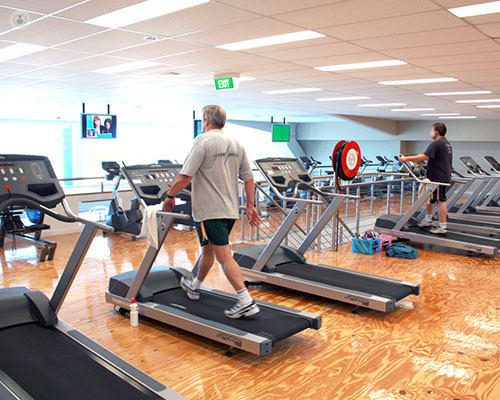

What is preventive cardiology?
Preventive cardiology is a set of measures that aim to reduce the chances of someone experiencing the results of cardoivascular disease by recognising symptoms and risk factors early.
There are two main types of preventive cardiology:
- Primary prevention: refers to a series of tests and tips to prevent the onset of heart disease.
- Secondary prevention: if there are already heart problems and even if you have already had cardiovascular surgery, preventive cardiology will help to improve health, continue rehabilitation and reduce the chances of further cardiac events.

Why is preventive cardiology done?
The high incidence and high mortality from diseases such as ischemic heart disease have been raising awareness in society to carry out prevention and awareness-raising campaigns. The aim of preventive cardiology is to try to avoid and fight the main cardiovascular risk factors, including:
- Obesity
- Diabetes – promoting healthy diabetes management and reducing the number of people who develop type two diabetes.
- Smoking
- High blood pressure
- Sedentary lifestyle – promoting a healthy diet and regular exercise.
- Hypercholesterolemia – reducing cholesterol levels.
What does preventive cardiology involve?
Preventive cardiology consists of a medical follow-up performed by a cardiologist to patients who, for whatever reason, are at risk of suffering from cardiovascular problems or who already have them. A medical follow-up is done through a sequence of medical appointments, as well as a diagnostic and preventive tests and treatments. The most common measures in preventive cardiology are:
- Electrocardiogram: heart activity is recorded and problems, such as arrhythmias, can be detected.
- Holter pressure: this test can detect sudden changes in blood pressure.
- Echocardiogram: through the non-invasive ultrasound system, you can observe heart function.
- Stress test: this test observes cardiac, pulmonary and metabolic activity when the body is in motion or exercising.
- Cardiac MRI: this scan allows us to observe the heart in three dimensions and assess its activity in real time.
- Computed tomography (CT) scan: similar to MRI scans, a CT scan obtains a number of images of the heart from different angles.
- Cardiac catheterisation: this test is performed to measure the pressure of the arteries and cardiac cavities, it is done by inserting a catheter through an incision in the groin until it reaches the arteries to be observed.
Next, to prevent heart diseases, the following may be recommended:
- Healthy habits: the first step in preventive cardiology will be to give guidelines to the patient to adopt healthy habits and make significant lifestyle changes (a balanced diet, and regular exercise).
- Pharmacological treatment: some patients will be recommended medication designed to control heart disease, such as those that control blood pressure.
- Surgery: if healthy lifestyle changes and pharmacological treatment are not enough, the cardiologist can choose to do preventive surgery, such as placing a stent to strengthen the venous walls.
How to prepare for preventive cardiology
Before attending a medical consultation for preventive cardiology, it would be good for the patient to come prepared, and even make a list of the following; the symptoms he/she feels, the activities that he/she has carried out, keeping a list of the medicines he/she must take and other information that could be useful to the doctor. It may also be useful for the patient to write down all the questions they wants to ask to the doctor.
Follow-up needed:
In the process of preventive cardiology, the specialist will provide the patient with guidelines that must be followed for the best chances of preventing heart disease. Preventive cardiology is a process in which the patient's collaboration is required to make it work.
